An endangered chicken with a storied past and unique appearance, the Russian Orloff is sometimes known as simply the Orloff or the Russian. However, it is common knowledge today that Orloff’s origins are actually Persian, rather than Russian.

However, this bird’s interesting past has helped it keep its Russian nickname.
Background and History of Russian Orloffs
First appearing in Persia around the 17th century, the Russian Orloff was distributed all throughout Asia and Europe during the century. Interestingly enough, the bird did not gain widespread popularity until about 200 years later.
After being introduced to the West by the Russian Count Orlov, the breed would become synonymous with both Russian and the count, earning the chicken the name by which it is known today.
Because of this, the chicken is commonly thought to be of Russian origin. This was thought to be the case up until fairly modern times, during which the Orloff’s Persian history was discovered.
After being introduced to Germany in the early 1900s, this chicken underwent a period of refinement. In fact, German breeders would go so far as to create the first miniaturized bantam version of the Orloff breed during this time.
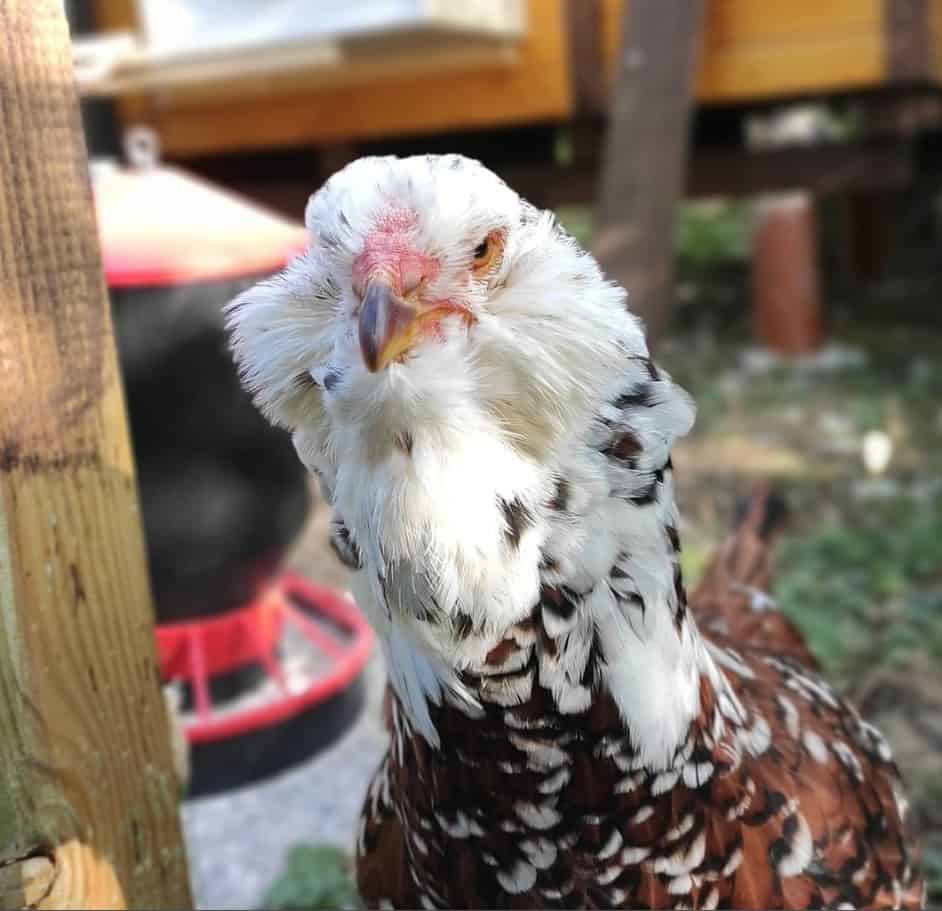
Introduced to Britain in the early 1900s and eventually admitted as part of the American Poultry Association’s Standard of Perfection, the chicken has actually since been removed from the association.
As the Russian Orloff has declined in popularity over the years, particularly in the West, the chicken was no longer considered a popular choice from breeders. Thus, the chicken has since been removed from the exclusive APA Standard and has since been listed by the Livestock Conservancy as critically endangered.
Interestingly enough, it is speculated that the Russian Orloff actually obtained popularity in America long before it was introduced in Europe, further clouding the issue of its decline.
In fact, the period of time in which the chicken was included in the Standard of Perfection being 1875 to 1894, it is clear the breed would have had to have been introduced to America long before it was introduced to the rest of Europe in the 1900s.
Russian Orloff Overview
| Feature | Russian Orloff |
|---|---|
| Purpose | Dual purpose (meat and egg) |
| Egg Color | Light brown |
| Egg Size | Medium |
| Broody | No |
| Heat Tolerance | No |
| Cold Tolerance | Yes |
| Comb Type | Walnut |
| Egg Production | Approximately 104 eggs per year |
| Chicken Skin Color | Yellow |
| Life Span | 5-8 years |
| Adult Weight (Hen) | 6.6 lbs |
| Adult Weight (Rooster) | 8 lbs |
| Backyard Friendly | 4/5 |
Russian Orloff Breed Standard and Appearance
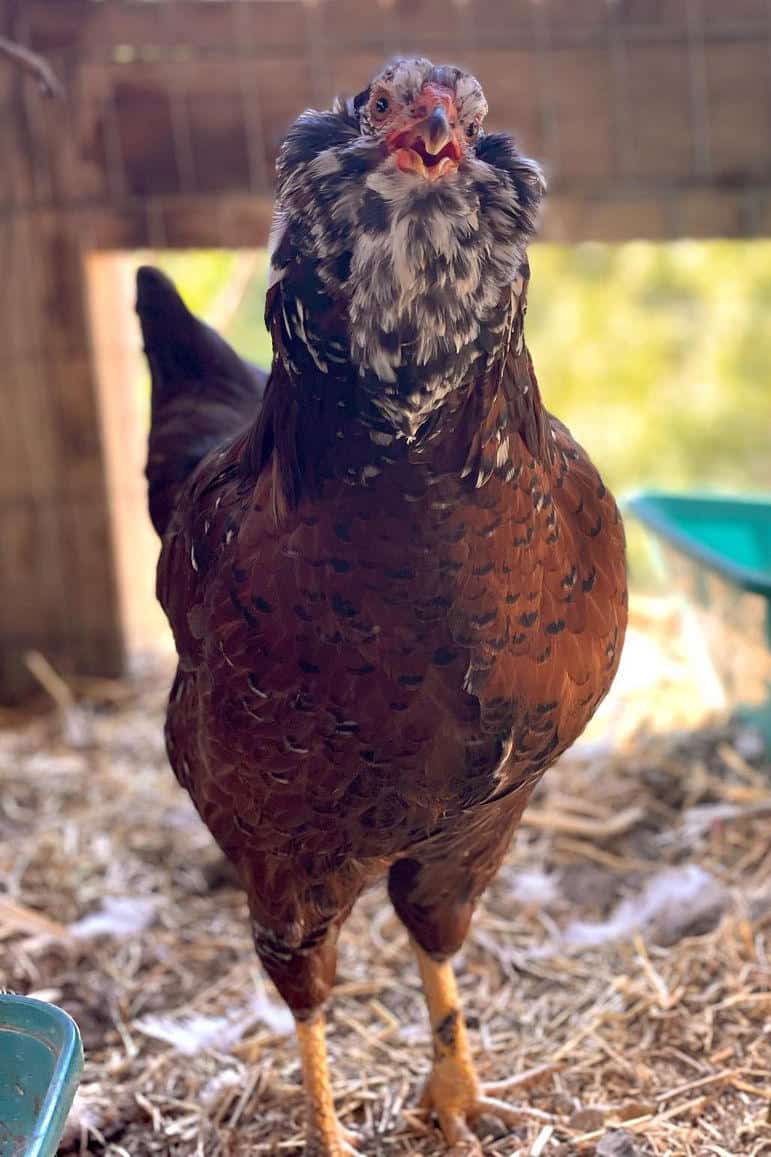
There are several varieties of Russian Orloff that are, or have at one point been, officially recognized:
- Black
- Cuckoo
- Mahogany
- Black-tailed red
- Spangled
- White
While no longer included as part of the APA’s breed standard, a Russian Orloff must possess certain characteristics in order to truly be considered part of the breed.
The Russian Orloff is tall and well-feathered, with a game-like appearance. While these birds are tall, their thickly feathered neck and head can at times give it a well-rounded appearance.
Russian Orloffs have walnut combs, very small wattles, and small earlobes. Because of their small extremities and their well-feathered appearance, Russian Orloffs are extremely cold-hardy.
Male Russian Orloffs typically weigh around 8 pounds, while females weigh about 6.6 pounds. Being larger birds, the Russian Orloff has historically been raised for meat production as well as egg production.
However, Russian Orloffs are slow to mature, meaning those looking for a meat-hardy chicken will likely find themselves waiting a long time before their chickens are ready, perhaps leading to an initial decline of the chicken’s popularity in favor of other meat-producing chickens.
Personality and Temperament
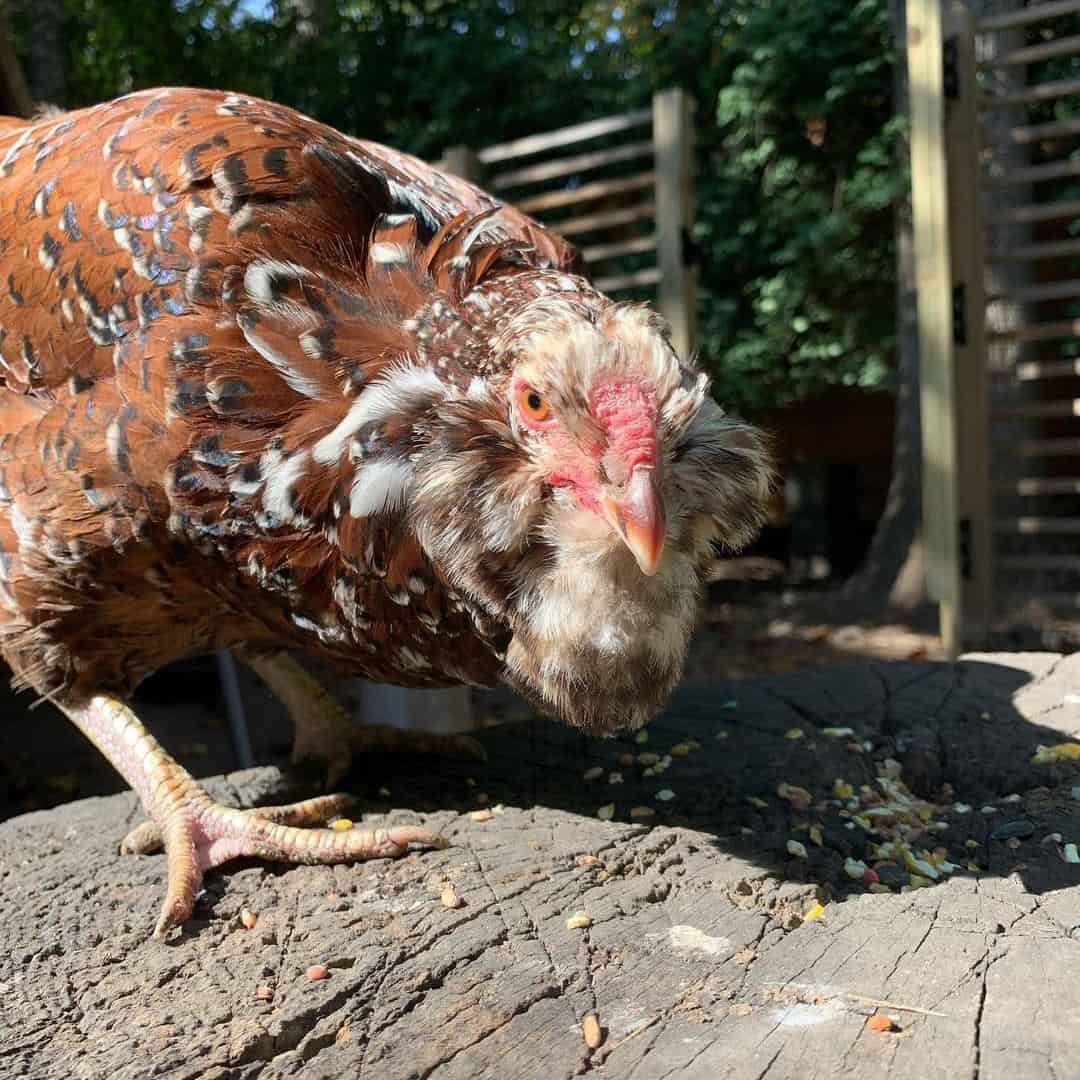
Russian Orloffs are known to be both quiet and calm, ideal for those looking for a low-maintenance chicken. However, they are generally not known for being especially friendly, meaning they aren’t likely to want to cuddle with their owners.
However, some Orloff chicks are known for being as cuddly and loyal as household pets, so this does come down to the individual chicken. Ranging from easy-going to friendly, these chickens are particularly known for their unaggressive personalities.
While they are not aggressive and generally peace-loving, Russian Orloffs are typically not defined as easily bullied and will likely stand up for themselves when confronted with more aggressive chickens.
However, these chickens are unlikely to start any confrontation themselves, and will likely prefer to go out of their way to avoid more aggressive breeds of chicken rather than fight with them.
This chicken enjoys free-ranging, often helping rid farms of pests such as fire ants and earwigs.
Extremely docile, the Russian Orloff handles confinement particularly well, although the breed does well outside in winter. Their overall friendly personalities and cold-hardiness make them a favorite of many chicken breeders hoping to give this kind bird the comeback it deserves.
Russian Orloff Egg Laying
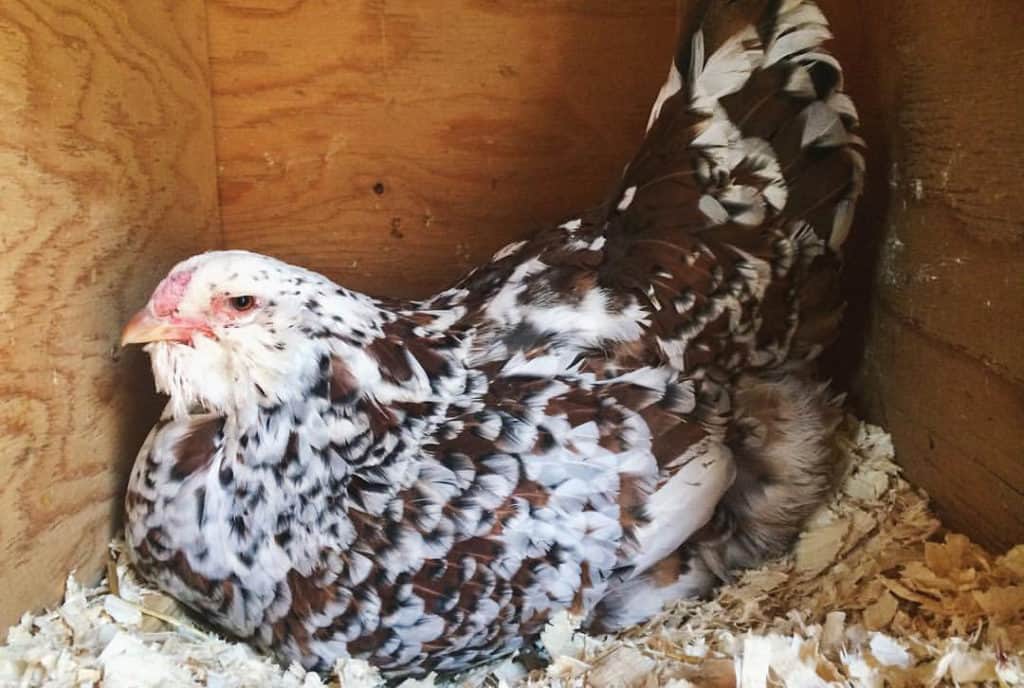
More suited to meat production than egg-laying, the Russian Orloff is still considered by many to be a moderate egg producer. Owners can expect the Russian Orloff to produce roughly around 2 eggs a week, with maximum egg production being about 104 eggs a year.
Because these birds are only fair egg layers, and usually lack dedicated breeders, they have reached an endangered status. However, they do lay enough eggs that those with a true dedication to their chickens will likely find it easy enough to breed them.
With enough perseverance, a good amount of Orloff eggs can be produced, helping to aid a resurgence in the Russian Orloff chicken’s numbers. While they are currently little in number, their eggs fetch a high price.
While the high price is good for the potential breeder selling eggs, this can be a large barrier of entry for those looking to get into breeding the Russian Orloff on a massive scale. However, the more Orloff chickens continue to be bred, the lower their egg prices will fall and the more Orloff chickens will proliferate.
These eggs are typically medium-sized and light brown in color, with an enjoyable taste.
Health Issues and Care
View this post on Instagram
It is likely that in order to help your Russian Orloff chickens lay, they will require additional calcium starters. As this breed is already endangered, potential breeders will not want to take any chances with their egg production.
It is also important to remember that while Russian Orloffs are cold hardy, they do not do as well in the heat. Therefore, their coop should provide them with plenty of spots to catch some shade and cool off in the summertime.
Otherwise, the Russian Orloff is not particularly susceptible to any specific disease. As with many other chickens, however, Orloff is susceptible to both internal and external parasites such as mites and lice.
Owners should be sure to keep their coups in good shape by spraying for these parasites and regularly inspecting their chickens’ feathers in order to stop the spread of these pests.
Aside from the lack of any particular health concerns, owners of this chicken should pay particular attention to breeding them in order to help the proliferation of the breed. As the breed is particularly friendly, as well as fair egg layers and meat producers, this all-around impressive chicken deserves a comeback.
5 Tips for Raising Russian Orloff Chickens

1. Chicks Will Require Starter Until About 8 Weeks Old
The Russian Orloff chicks, as with many chicks, do well to be provided with chick starters at the beginning of their lives. This will help keep the endangered chicken on the path to healthy adulthood.
2. Can Begin Laying Around 16 Weeks
When no longer chicks, the Russian Orloff is well on the path to producing strong eggs. Providing your chicken with additional sources of calcium, such as oyster shells in a small dish, can help your Russian Orloffs begin laying.
3. Provide them With Adequate Housing
Be sure to give your chickens enough space in the coup, with about 4 square feet of nesting space per chicken, and 12 inches of roosting space for every chicken.
4. Good Breeding Stock Will Be Costly, But Worth It
Due to their extreme rarity and endangered status, finding good breeding stock for your Russian Orloffs will likely cost you a pretty penny. However, once you have purchased good stock, you should be able to successfully breed these chickens yourself.
Knowing that you are helping to breed an endangered chicken and lowering the price of breeding stock just might be incentive enough!
5. Great All-Around Chicken
While these are not terrible egg-producers, remember that underneath that ample feathering is a chicken with plenty of meat. This chicken is so versatile that regardless of your breeding purpose, it is likely you will find some good use for your Russian Orloffs.
Summary
Helping to breed Orloffs is one of the best things you can do for this breed. The Russian Orloff is an all-around great chicken that has unfortunately become endangered over the years. Great for egg-production as well as meat, good to look at, and friendly pets, there is no reason the Russian Orloff should not make a comeback.

Joseph Hudson has been raising chickens for over 15 years. In 2018, he completed the Agriculture & Natural Resources program at Mt. San Antonio College. He currently raises over 1400 chickens on his 7.5-hectare farm. He keeps sharing his experience on raising healthy and happy chickens on Chicken Scratch The Foundry.
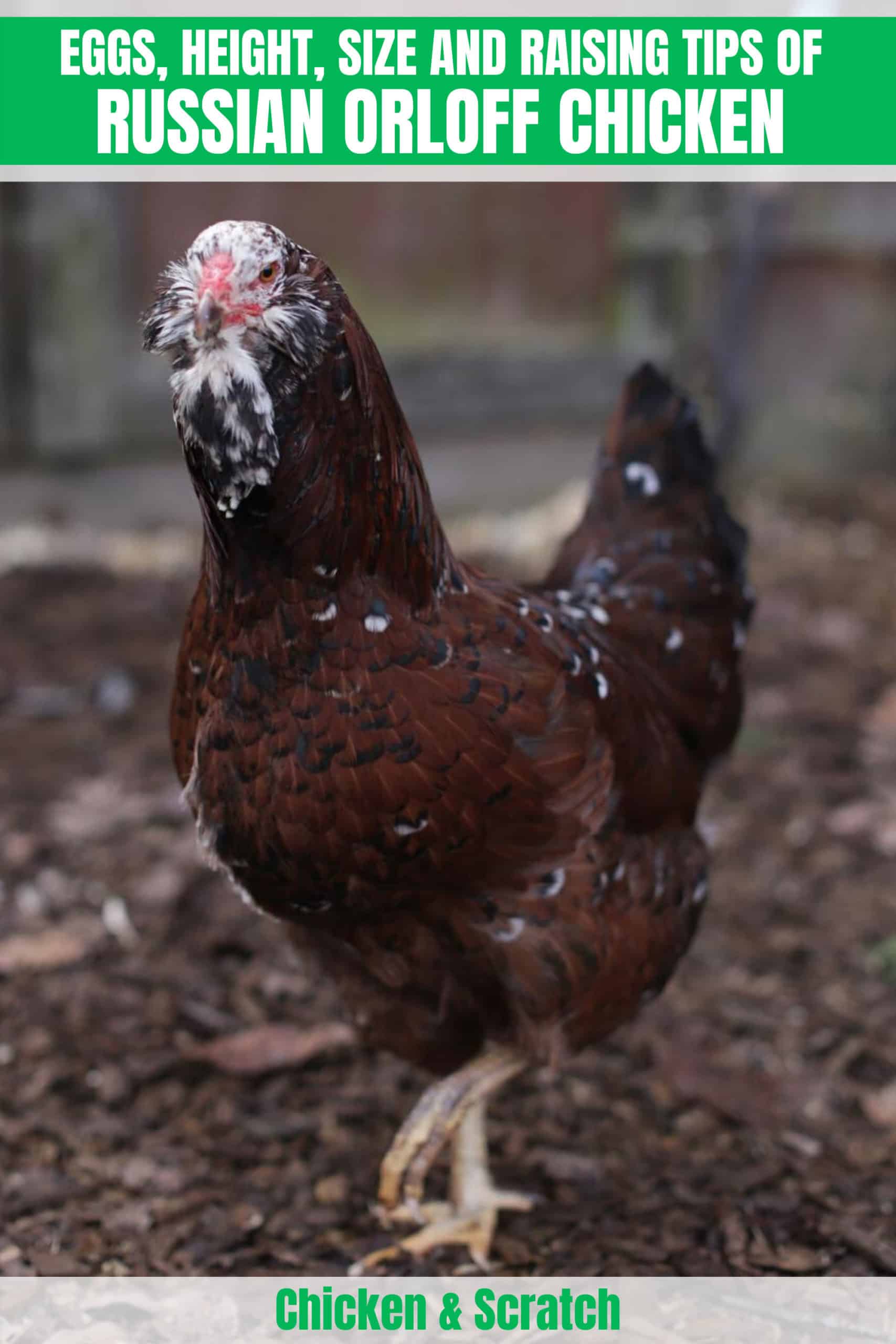







Thank you. This was very informative and helpful.